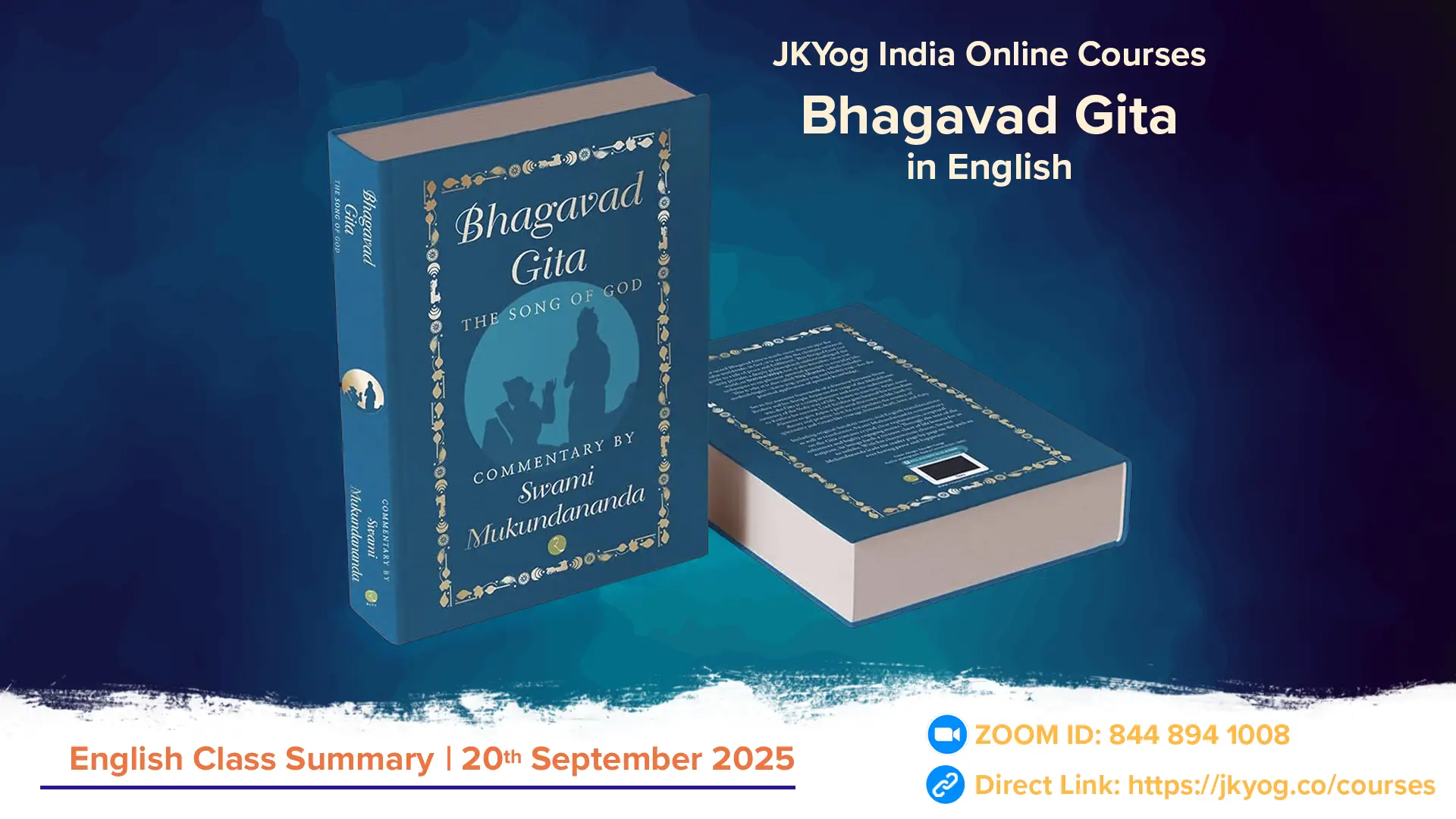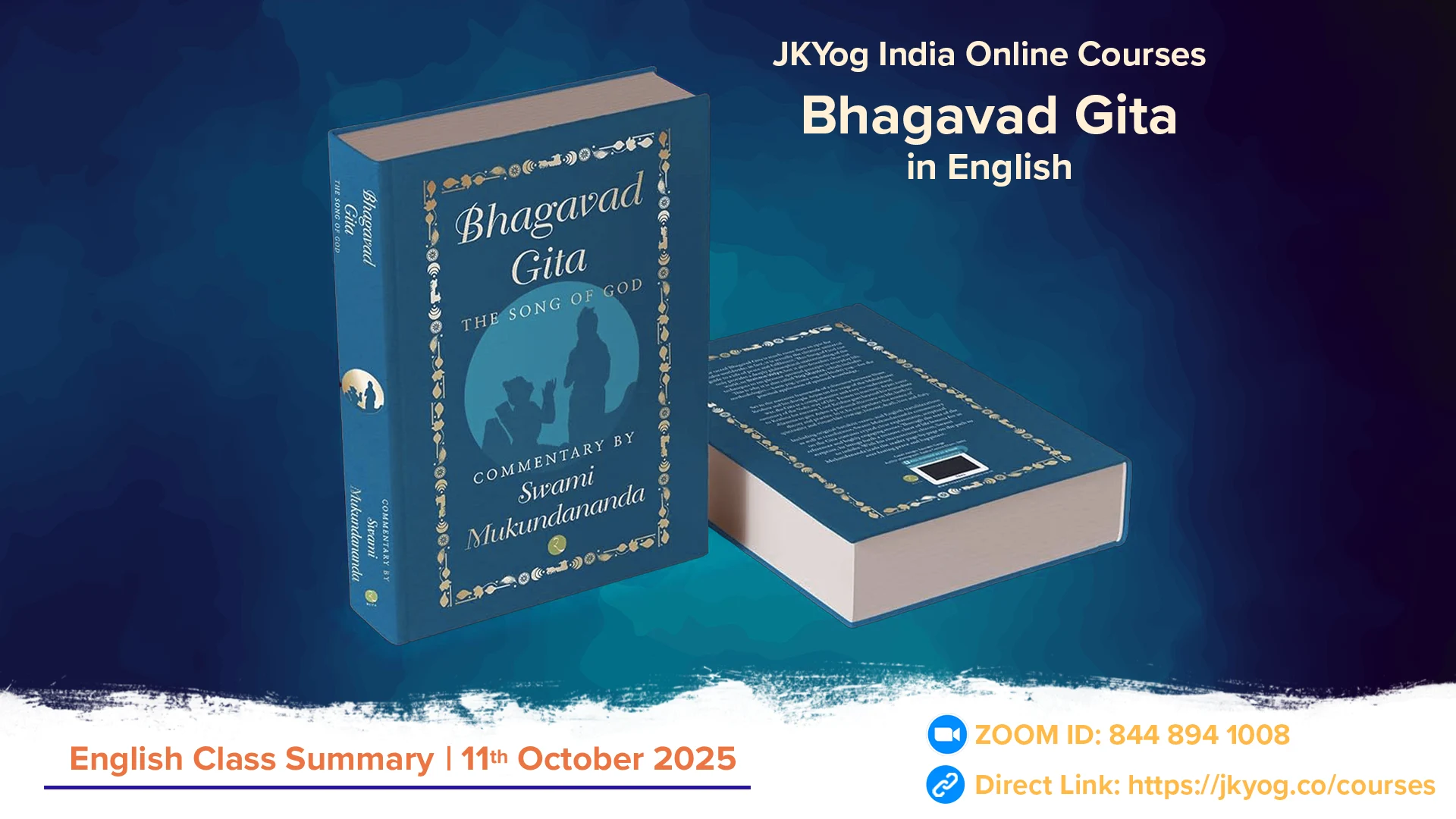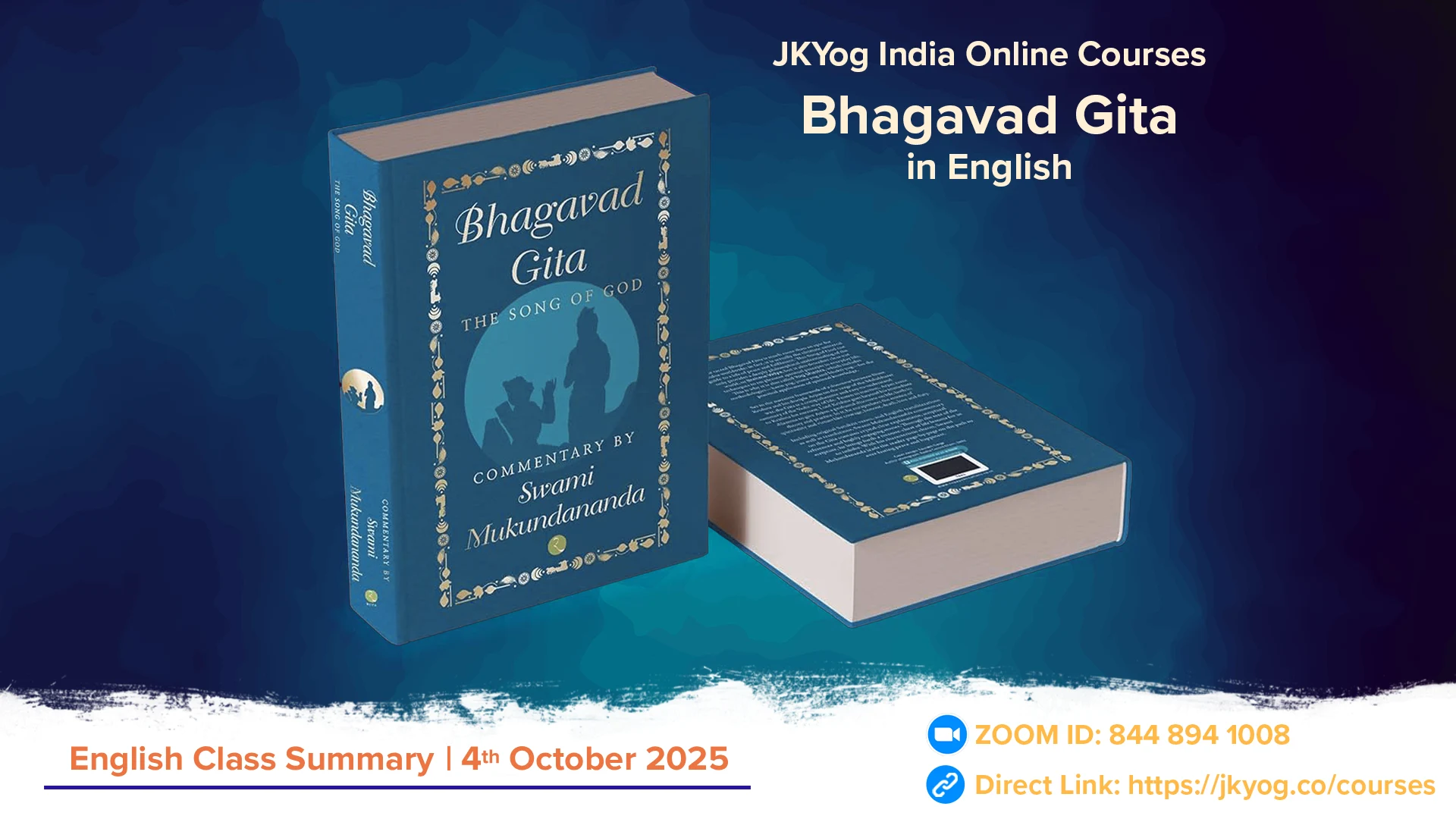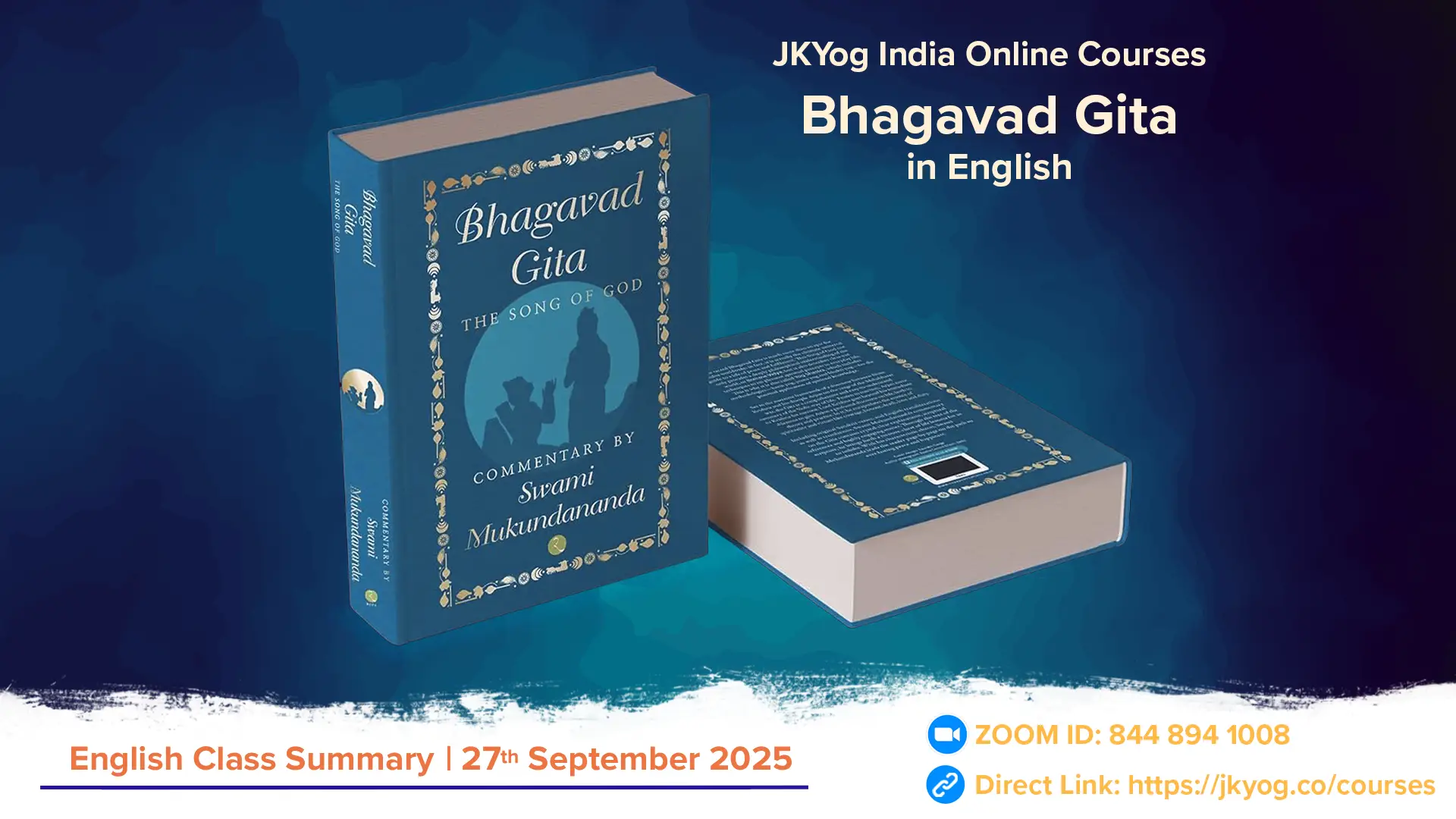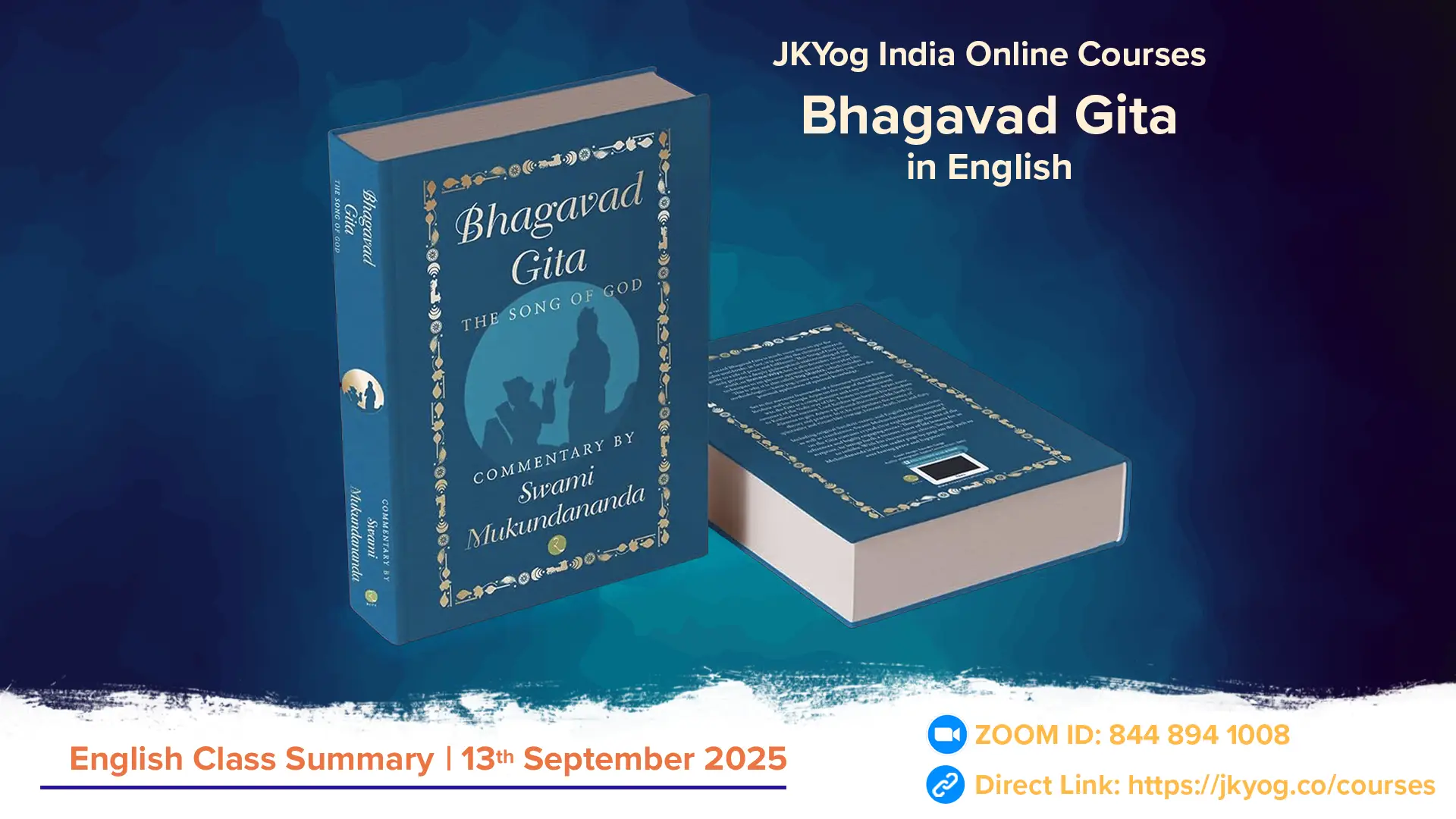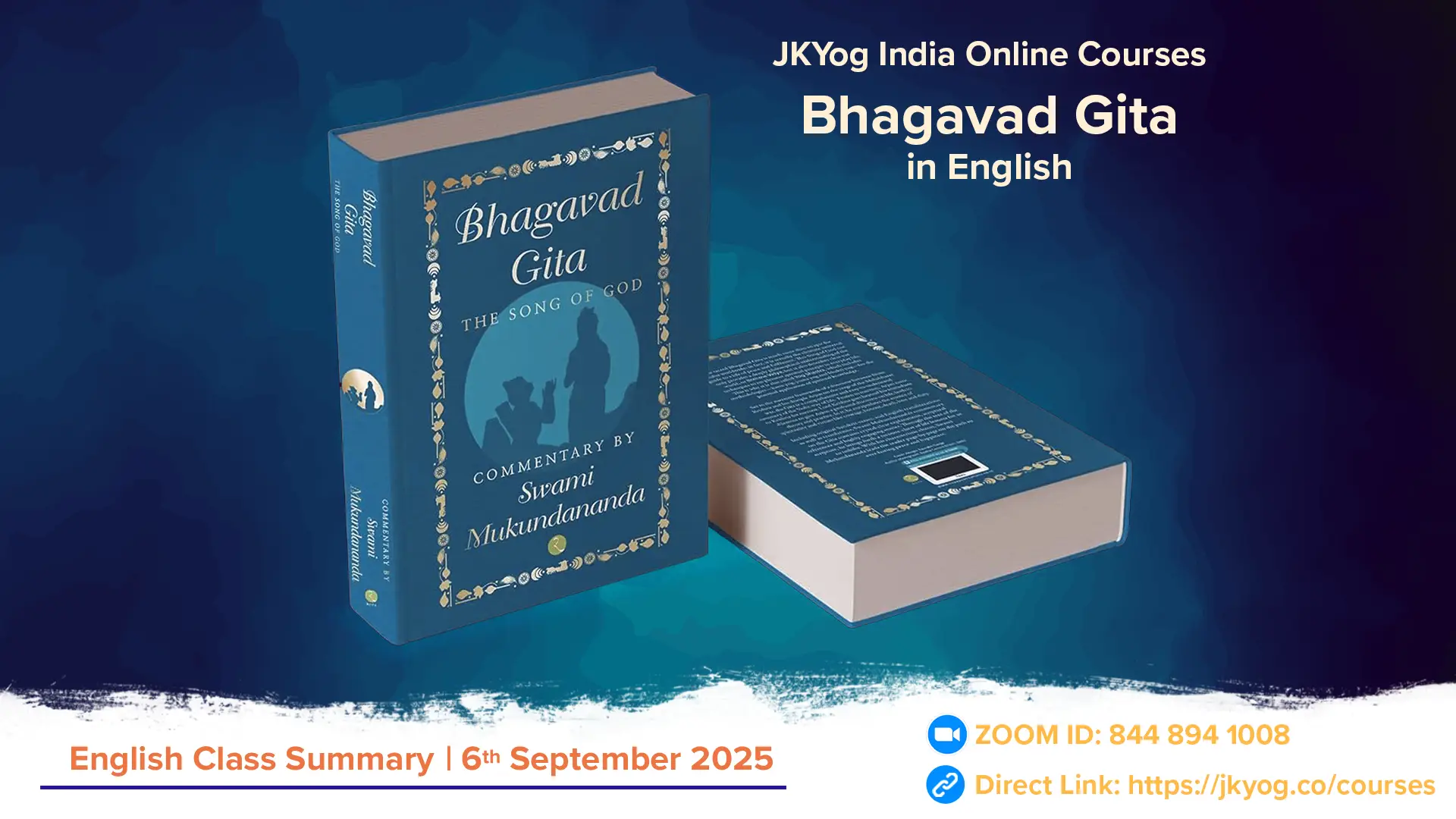Gita 14.1
श्रीभगवानुवाच |
परं भूय: प्रवक्ष्यामि ज्ञानानां ज्ञानमुत्तमम् |
यज्ज्ञात्वा मुनय: सर्वे परां सिद्धिमितो गता: || 1||
śhrī-bhagavān uvācha
paraṁ bhūyaḥ pravakṣhyāmi jñānānāṁ jñānam uttamam
yaj jñātvā munayaḥ sarve parāṁ siddhim ito gatāḥ
In the previous chapter, Shree Krishna revealed that every living being is constituted of two fundamental principles: the soul (puruṣh), which is eternal and conscious, and matter (prakṛiti), which provides the body and the field of action. While prakṛiti creates the environment and circumstances in which life unfolds, it does not function on its own. Rather, it operates under the supervision of the Supreme Lord, who resides within the body of every living entity as the inner witness and controller. This establishes that both the soul and matter are subordinate to the Supreme Divine Will.
Building upon that foundation, in the current chapter, Krishna explains the three guṇas (qualities of material nature)—sattva (goodness, harmony, purity), rajas (passion, activity, restlessness), and tamas (ignorance, inertia, darkness). These three qualities pervade all aspects of prakṛiti and bind the soul to the material world by influencing thoughts, desires, and actions.
Shree Krishna emphasizes that understanding how these guṇas function is crucial for self-realization. By recognizing their influence in our lives and learning to rise above them, we gradually purify our consciousness. This transcendence does not mean rejecting life but rather cultivating detachment, equanimity, and devotion to God.
Ultimately, when a person no longer remains dominated by any of the three guṇas but instead aligns with the Divine through wisdom and devotion, they attain the highest perfection—liberation from material bondage and union with the Supreme.
Gita 14.2
इदं ज्ञानमुपाश्रित्य मम साधर्म्यमागता: |
सर्गेऽपि नोपजायन्ते प्रलये न व्यथन्ति च || 2||
idaṁ jñānam upāśhritya mama sādharmyam āgatāḥ
sarge ’pi nopajāyante pralaye na vyathanti cha
Shree Krishna assures Arjun that gaining knowledge of the three guṇas (modes of material nature) frees the soul from bondage. Such a realized soul:
- No longer undergoes repeated cycles of birth in a mother’s womb.
- Is not subject to remaining dormant in God’s womb during universal dissolution.
- Is not reborn when creation begins anew.
Krishna highlights that the guṇas are the root cause of bondage, and knowledge of them illuminates the path to liberation. To capture Arjun’s full attention, he often declares the transformative results of his teachings before giving the details.
The liberated soul, freed from material energy, comes under the shelter of God’s Yogmaya energy, which bestows divine qualities—knowledge, love, and bliss. This state is described by the term sādharmyam, meaning the soul attains a nature similar to God’s own. Thus, the soul acquires godlike attributes and experiences true freedom from misery (na vyathanti).
BG 14.3 -14.4
मम योनिर्महद् ब्रह्म तस्मिन्गर्भं दधाम्यहम् |
सम्भव: सर्वभूतानां ततो भवति भारत || 3||
सर्वयोनिषु कौन्तेय मूर्तय: सम्भवन्ति या: |
तासां ब्रह्म महद्योनिरहं बीजप्रद: पिता || 4||
mama yonir mahad brahma tasmin garbhaṁ dadhāmy aham
sambhavaḥ sarva-bhūtānāṁ tato bhavati bhārata
sarva-yoniṣhu kaunteya mūrtayaḥ sambhavanti yāḥ
tāsāṁ brahma mahad yonir ahaṁ bīja-pradaḥ pitā
Chapters 7 and 8 explain that material creation operates in cycles: creation, maintenance, and dissolution. During dissolution, souls who are vimukh (those turned away from God) enter a state of suspended animation within Maha Vishnu, while prakṛiti (material energy) lies unmanifest in His mahodara (cosmic womb).
When God decides to initiate creation, He merely glances at prakṛiti, which then begins to unfold. This sequentially gives rise to:
- Mahān (the cosmic intelligence)
- Ahankār (ego)
- Pañch-tanmātrās (five subtle elements)
- Pañch-mahābhūta (five gross elements)
With the assistance of Brahma, the secondary creator, material energy then creates various life forms. Souls are placed into these bodies according to their past karma, allowing the manifestation of living beings.
Shree Krishna likens prakṛiti to a womb and souls to seeds, illustrating that the Supreme Lord implants souls in Mother Nature, who then produces multitudes of life forms. As Śhrīmad Bhāgavatam (3.26.19) confirms, the Supreme Lord impregnates souls into the material womb, and only those souls who are vimukh are cast into the material world, guided by their karmic tendencies.
Gita 14.5
सत्त्वं रजस्तम इति गुणा: प्रकृतिसम्भवा: |
निबध्नन्ति महाबाहो देहे देहिनमव्ययम् || 5||
sattvaṁ rajas tama iti guṇāḥ prakṛiti-sambhavāḥ
nibadhnanti mahā-bāho dehe dehinam avyayam
After establishing that all life forms arise from puruṣh (soul) and prakṛiti (material nature), Shree Krishna explains how prakṛiti binds the soul. Although the soul is divine and eternal, its identification with the body, mind, and intellect, which are products of prakṛiti, causes it to become entangled in material nature.
Prakṛiti is characterized by three guṇas (modes):
- Sattva – goodness, harmony, and knowledge
- Rajas – passion, activity, and desire
- Tamas – ignorance, inertia, and darkness
Shree Krishna compares this to three-colour printing: just as an excess of one colour on paper gives the picture a particular hue, the predominance of a particular guṇa shapes the personality and behaviour of an individual.
The dominant mode in a person is influenced by internal thoughts, external circumstances, past sanskārs (impressions), and other factors. This predominance imprints its characteristic shade on the soul’s personality, influencing actions, emotions, and tendencies.
Thus, the soul, while inherently divine, becomes swayed and bound by the guṇas, and understanding their impact is essential for liberation.
Gita 14.6
तत्र सत्त्वं निर्मलत्वात्प्रकाशकमनामयम् |
सुखसङ्गेन बध्नाति ज्ञानसङ्गेन चानघ || 6||
tatra sattvaṁ nirmalatvāt prakāśhakam anāmayam
sukha-saṅgena badhnāti jñāna-saṅgena chānagha
Sattva guṇa (mode of goodness):
The word prakāśhakam means “illuminating,” and anāmayam means “healthy, peaceful, free from misery.”
- Sattva is serene and radiant, fostering virtues like calmness, compassion, charity, satisfaction, and tranquillity.
- It enhances knowledge, clarity of intellect, and even physical well-being.
- However, attachment to the happiness and serenity it brings still binds the soul within material nature.
Illustration of the three guṇas:
- Like three robbers attacking a traveller:
- Tamas (ignorance): seeks to “kill” the soul by pulling it into laziness, delusion, and darkness.
- Rajas (passion): binds the soul with desires, restlessness, and worldly cravings.
- Sattva (goodness): relieves suffering, promotes virtue, and guides the soul toward liberation, but cannot itself take the soul beyond material bondage.
Beyond the three guṇas:
- True freedom lies in śhuddha sattva (pure goodness), which is part of God’s divine energy and beyond material nature.
- By God’s grace, when the soul becomes God-realized, it receives śhuddha sattva, making the senses, mind, and intellect divine.
Gita 14.7
रजो रागात्मकं विद्धि तृष्णासङ्गसमुद्भवम् |
तन्निबध्नाति कौन्तेय कर्मसङ्गेन देहिनम् || 7||
rajo rāgātmakaṁ viddhi tṛiṣhṇā-saṅga-samudbhavam
tan nibadhnāti kaunteya karma-saṅgena dehinam
Rajo guṇa (mode of passion):
Described by Patañjali as the source of material activity, and by Shree Krishna as rooted in attachment and desire.
It fuels lust for sensual and mental pleasures, creating strong attachments to possessions, relationships, career, prestige, and worldly achievements.
This mode drives people into restless activity for material gains, making them see external objects as sources of happiness.
Desires and rajo guṇa feed into each other, forming a cycle that traps the soul in worldly bondage.
Way to transcend rajo guṇa:
Practice Karm Yog—offering the results of one’s actions to God.
This cultivates detachment from worldly outcomes and gradually reduces the hold of rajo guṇa on the soul.
Gita 14.8
तमस्त्वज्ञानजं विद्धि मोहनं सर्वदेहिनाम् |
प्रमादालस्यनिद्राभिस्तन्निबध्नाति भारत || 8||
tamas tv ajñāna-jaṁ viddhi mohanaṁ sarva-dehinām
pramādālasya-nidrābhis tan nibadhnāti bhārata
Tamo guṇa (mode of ignorance):
Opposite of sattva guṇa, it draws people toward sleep, laziness, intoxication, violence, and gambling.
It clouds discrimination, causing people to lose the sense of right and wrong and to indulge in immoral behaviour for selfish ends.
Duty feels burdensome under its influence, leading to neglect, sloth, and inertia.
This mode pushes the soul deeper into darkness, making it forget its spiritual identity, life’s true purpose, and the rare opportunity for progress that human birth provides.
Summary: JKYog India Online Class- Bhagavad Gita [English]- 20.9.2025

